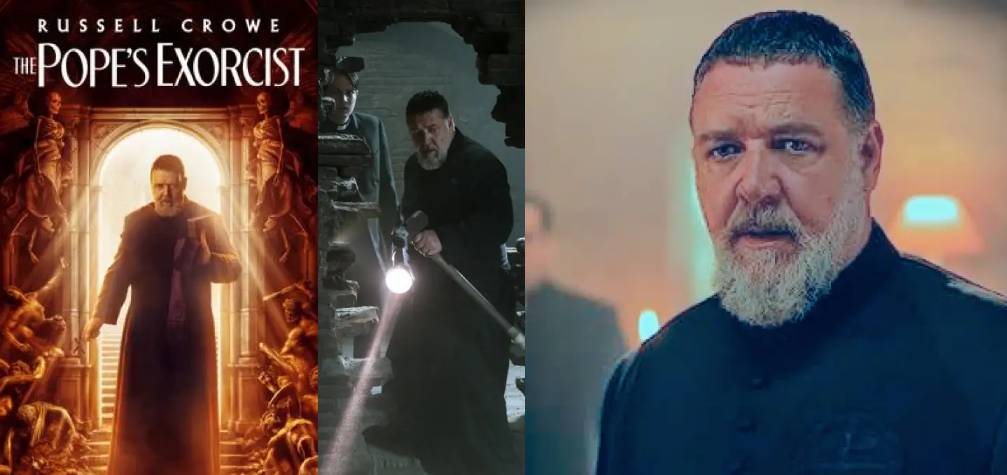The Pope's Exorcist: Unveiling the Realm of Spiritual Warfare and Faith in the Face of Darkness
5 min read
08 Jun 2025
Within the realms of faith, religion, and the supernatural, the title "The Pope's Exorcist" casts a spell of intrigue and curiosity. Exorcism—a practice believed to expel malevolent spirits from individuals—has long been a subject of fascination and contemplation. This practice, often shrouded in mystery and ritual, finds its representation in the individuals who devote their lives to confronting spiritual forces of darkness. At the heart of this realm stands the enigmatic figure of the exorcist, an individual tasked with confronting the unknown and serving as a spiritual guardian in the face of the unseen.
The term "The Pope's Exorcist" conjures an image of a figure operating within the innermost sanctums of the Vatican, called upon to combat the forces of evil that may afflict souls. However, the reality of exorcism is far more intricate and nuanced than popular perception might suggest. Exorcism has roots in various religious traditions, including Christianity, where it is conducted as a solemn and ritualized act of spiritual cleansing.
The concept of exorcism has been practiced across cultures and faiths for centuries. In Christianity, exorcism involves the removal of demonic possession or oppression from individuals who are believed to be afflicted by malevolent spirits. Within the Roman Catholic Church, the role of exorcist is a solemn one, requiring thorough training, spiritual preparation, and a deep understanding of both theology and psychology.

The Pope's Exorcist" often refers to a priest appointed by the Vatican to serve as an official exorcist. These individuals undergo rigorous training, equipping them with the knowledge and skills needed to discern genuine cases of possession from psychological or medical issues. The role demands a profound commitment to faith, a strong grounding in religious teachings, and a willingness to engage in spiritual warfare.
Exorcism cases often involve individuals who exhibit signs of possession, such as speaking in unknown languages, superhuman strength, and aversions to religious symbols or artifacts. The exorcist's role is to conduct prayers, rituals, and liturgies designed to remove the oppressive spiritual presence and free the afflicted person from the grasp of malevolent forces. While the portrayal of exorcism in popular media often emphasizes dramatic displays of supernatural power, the actual process is typically a deeply solemn and prayerful affair, rooted in the exorcist's faith and conviction.
In the modern world, the practice of exorcism continues to be a subject of fascination and controversy. Skeptics question the authenticity of possession cases, attributing symptoms to psychological or medical conditions. However, within the framework of faith, exorcism represents a powerful symbol of the eternal struggle between good and evil, light and darkness. It serves as a reminder of the ongoing spiritual battles that individuals face, both on a personal and a collective level.
The role of "The Pope's Exorcist" holds a unique position within the realm of exorcism. The individual appointed by the Pope to this role is often an experienced priest who is entrusted with addressing cases that require the highest level of discernment and expertise. Their dedication to the practice of exorcism underscores the Church's commitment to addressing the spiritual needs of its faithful and upholding the ancient tradition of confronting evil forces.
While exorcism might remain shrouded in mystery for some, its significance within the framework of faith is undeniable. It represents a belief in the transcendent battle between good and evil, a practice rooted in the conviction that spiritual guidance and intervention can bring healing and restoration to afflicted souls. The exorcist's role, whether within the Vatican or local communities, reflects a commitment to serving as a beacon of faith in the face of adversity and darkness.
In conclusion, "The Pope's Exorcist" offers a glimpse into the world of spiritual warfare, faith, and the ongoing struggle between forces of light and darkness. Exorcism, as a practice deeply embedded within religious traditions, serves as a reminder of the profound spiritual dimensions of human existence. While its portrayal in popular media may sensationalize the practice, its essence is grounded in faith, compassion, and the unwavering belief that the power of good can triumph over the forces of evil. As long as the mysteries of the unseen continue to captivate the human imagination, the figure of the exorcist will stand as a symbol of faith's resilience and its eternal quest for understanding and redemption.


